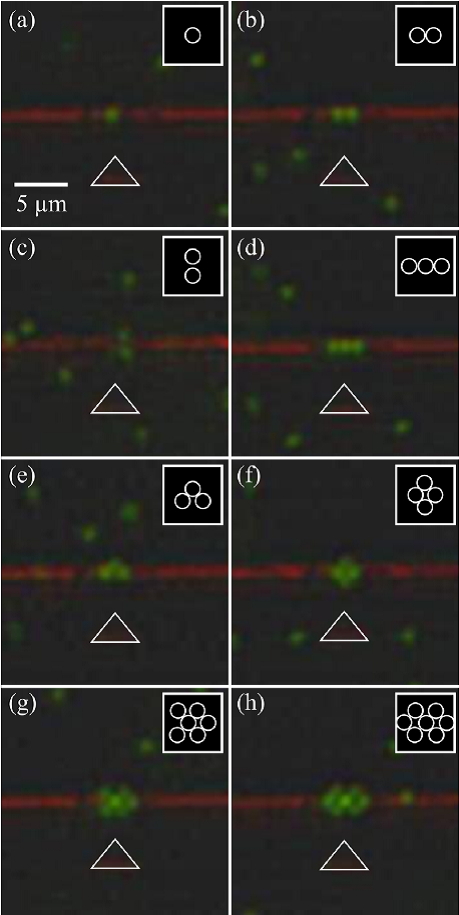
In the point dipole approximation, a dielectric particle placed in a spatially varying electromagnetic field undergoes two forces. The first one is radiation pressure, which tends to push the particle along the beam propagation direction, and the second one is a gradient force, which attracts particles towards the high field regions.
Here we wish to localise particles evolving in Brownian motion in a water filled fluidic cell with an optical nanocavity. The on chip nanocavity confines light spatially and spectrally and creates in its near-field driven optical forces. Since the nanocavity is a standing wave system, the effect of the radiation pressure is absent. We use the tailored field of the nanocavity to attract the polystyrene particles with the gradient forces; the effect obtained is called optical trapping.
Figure caption: Stable particle assemblies. The white triangle points the nanocavity centre in the waveguide materialised in red, while the polystyrene particles appear as green dots. [(a) - (h)] show eight stable conformations observed over the nanocavity when the laser is on.
When the laser excites the nanocavity at its resonance, a particle passing nearby can be trapped. If the laser is switch off, the previously trapped particle is liberated. Furthermore, we have observed the formation of particle assemblies. We can capture several particles on a single nanocavity and the particles arrange themselves according to basic geometrical shapes maximising their number above the nanocavity. Further work will target applications in life sciences, for
in situ monitoring for example.